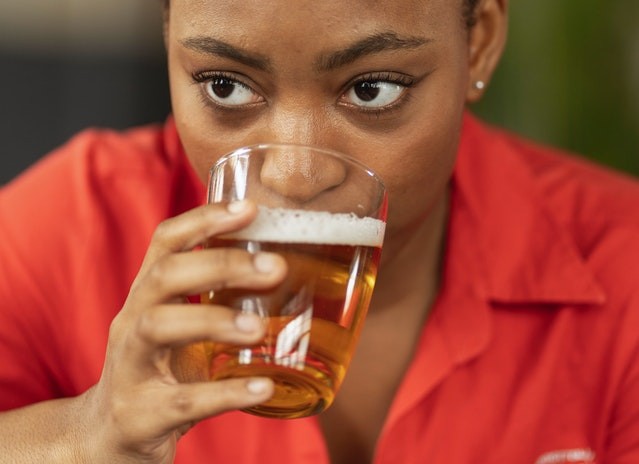Now, scientists at Scripps Research have discovered how, in rats dependent on alcohol, environmental cues that become associated with drinking during withdrawal are much more powerful than those learned during the early phases of alcohol use, leading to more irresistible cravings.
Particular cues can often trigger cravings. New work by the Weiss lab has revealed that environmental cues that become associated with drinking during withdrawal are much more powerful than those learned during the early phases of alcohol use https://t.co/uIRHuSL9JR @BrJPharmacol pic.twitter.com/VhRw6LtiGm
— Scripps Research (@scrippsresearch) May 3, 2022
A EurekAlert! report said that for some people with alcohol use disorder, it might be a scenario of a "familiar bar or a favorite bottle, for others."
Additionally, it might be the feeling of leaving the workplace after a tiring and stressful day in the office or going to a crowded party. Most people struggling with alcohol or drug addiction have specific cues that set off their cravings.
The new findings could ultimately result in new treatments to minimize cravings in individuals who have addictions.
ALSO READ: Beer Belly vs. Chunky Thighs and Big Hips: Who Lives Longer?

Research shows the environmental triggers that make cravings for alcohol stronger during withdrawal.
Environmental Stimuli
According to Professor Friedbert Weis, Ph.D., from Scripps Research, "We already knew that the craving" generated by environmental stimuli usually strengthens over time in severe alcohol use disorder.
However, he added, no one had teased apart, at both a neurobiological and behavioral level, why that is until at present.
Approximately 14.5 million people in the United States are suffering from alcohol use disorder, which includes a range of unhealthy drinking behavior.
Similar to other drug addictions, alcohol addiction is characterized by withdrawal cycles, abstinence, and relapse.
Stronger Cravings During Withdrawal
Authors of the study published in the British Journal of Pharmacology said cravings set off by environmental triggers, like those that exist when driving past a local bar, are strong drivers for relapse.
In a similar way, rats that have learned to link a specific smell to alcohol will search for alcohol when exposed to the smell.
In this new work, Weis, together with his colleagues sought to understand if the experience of repeatedly drinking alcohol while on withdrawal, instead of just the length of time or the addiction's severity, helps in the strengthening of the learned linked that results in craving.
The researchers conditioned the mice that were not reliant on alcohol to link an orange or anise scent with alcohol.
Then, a subset of the said animals underwent cycles of withdrawal, during which they were conditioned to link a different smell with alcohol consumption.
Weiss said this enabled them to separate, for the first time, the learning that's happening during the original non-dependent state, and the learning that's happening during withdrawal.
'Feel-Good' Effects of Alcohol
When all the animals were then tested to find out what lengths they would go to in the quest for alcohol in the existence of a conditioned smell, Weiss' team found that cues learned during withdrawal were far more powerful at eliciting a reaction.
This means that the experience of learning how alcohol is relieving negative withdrawal symptoms results in even stronger cravings compared to the original experience of learning the feel-good effects of alcohol
It is commonly believed that people are drinking because it's making them feel good. However, in those who have developed reliance, that so-called "feel-good" sensation that the drug generates is actually a turnaround or relapse of feeling terrible.
When such a relapse of feeling terrible is repeatedly encountered, then, environmental signals that become linked to this experience are producing a much stronger craving compared to the initial "feel-good craving," as indicated in the statement posted on the Press Release Point website.
Related information about Scripps Research finding effective drugs against alcohol craving is shown on KPBS Public Media's YouTube video below:
RELATED ARTICLE: Alcohol Risks and Benefits: What Does Beer and Wine Do to the Body?
Check out more news and information on Alcohol in Science Times.














